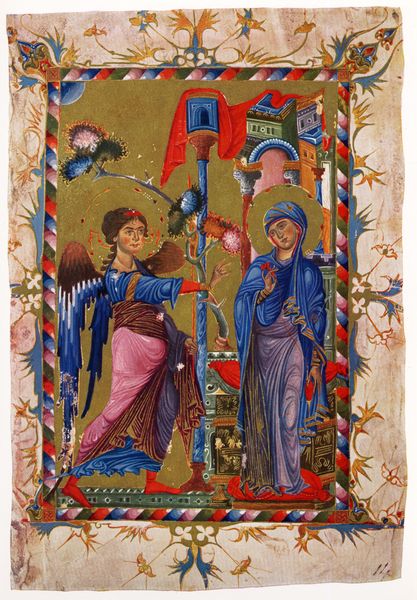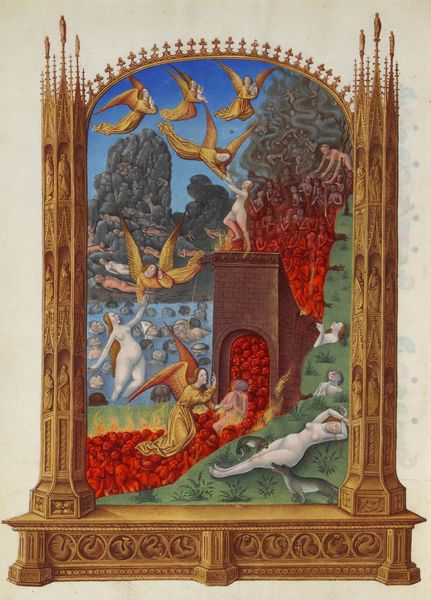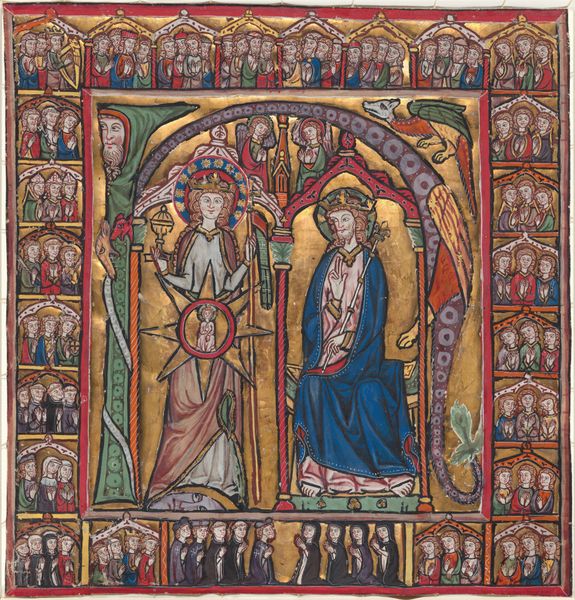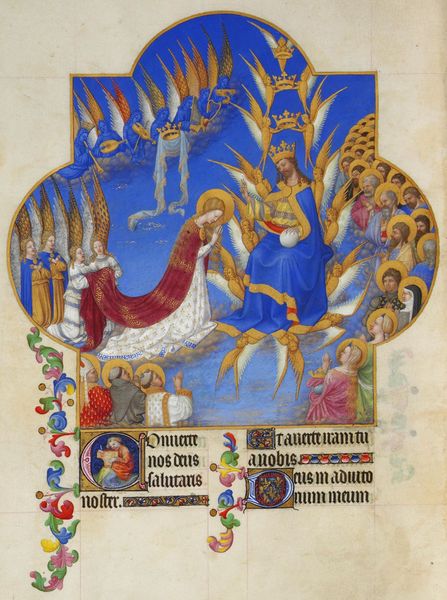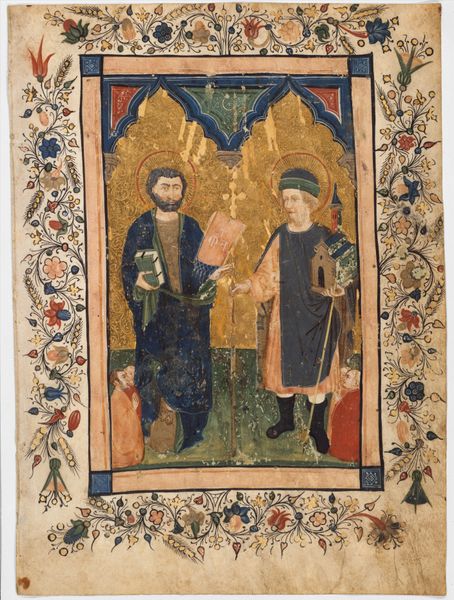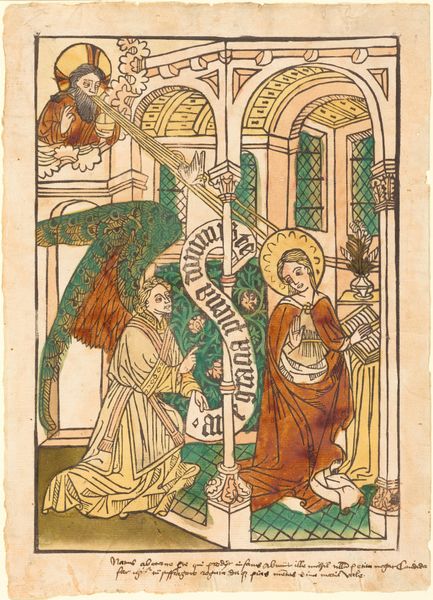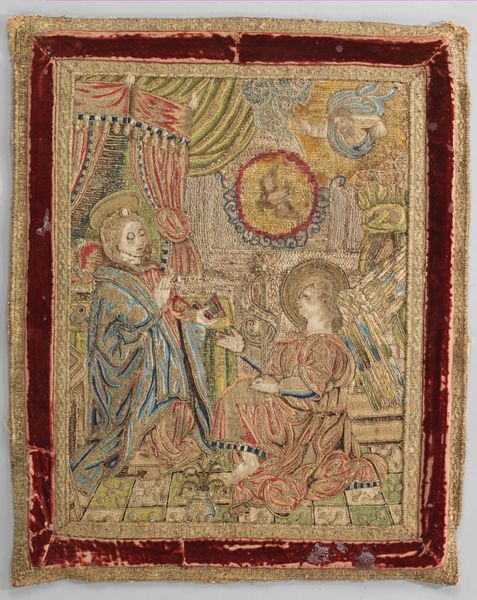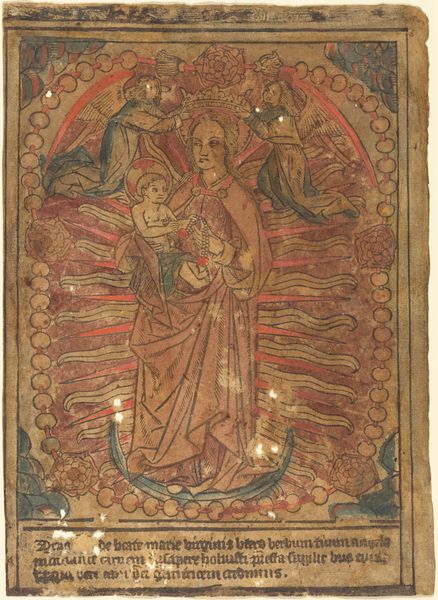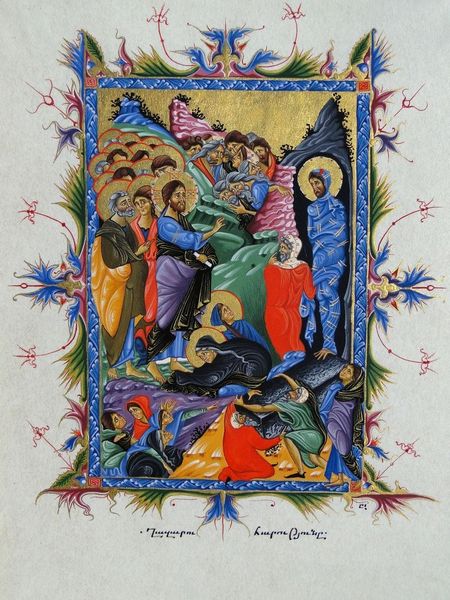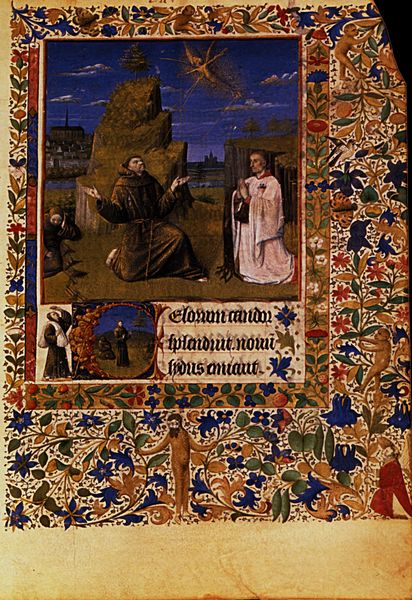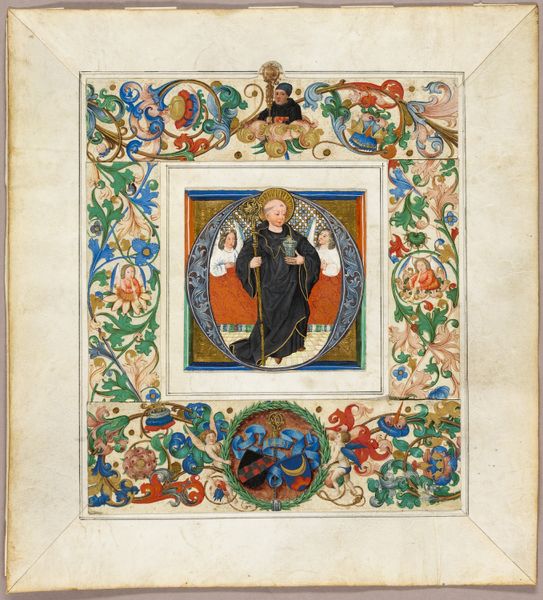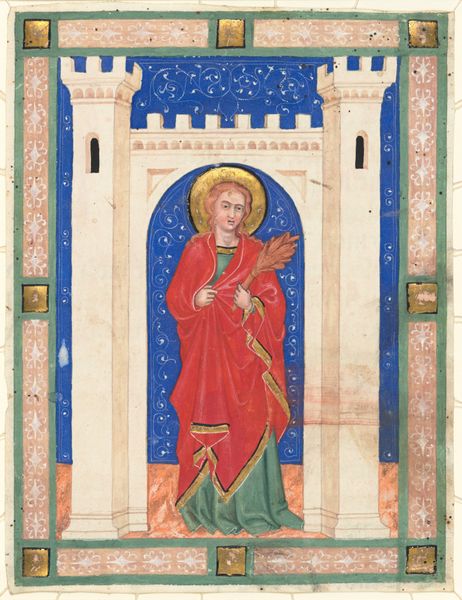
tempera, painting
#
portrait
#
medieval
#
tempera
#
painting
#
international-gothic
#
virgin-mary
#
miniature
Dimensions: 5 x 3 5/8 in. (12.7 x 9.2cm) Miniature: 2 5/8 x 1 3/4 in. (6.7 x 4.5cm)
Copyright: Public Domain
Curator: Let’s discuss this gorgeous manuscript illumination. The "Coronation of the Virgin," created sometime between 1452 and 1463, represents a high point in French International Gothic art. It's done with tempera on parchment and resides here at the Metropolitan Museum of Art. What’s your first take on it? Editor: Opulence! It strikes me as a deeply devotional, yet vibrant display. The intricate floral borders surrounding the central scene create this miniature garden of paradise—birds, blooms, all shimmering. And in the heart of it all, such solemnity. Curator: Indeed. The illumination presents the Coronation of the Virgin, a theme that gained prominence throughout the late medieval period. Visually, how does the imagery function, beyond its face-value subject matter? Editor: Consider the symbolism: The Virgin, crowned by God the Father while the Holy Spirit, symbolized by the dove, hovers above. That composition isn’t accidental; it's the Trinity itself blessing this moment, this ascendance. That visual link, almost a chain of blessing, would carry profound weight with a medieval audience. Also, the mandorla. Curator: Absolutely, a typical Medieval motif. The entire composition suggests the hierarchies of the sacred and temporal orders so deeply entrenched in late medieval social structures. Editor: Beyond that, the meticulous detail given to the flora and fauna in the borders, the gold leaf highlighting specific forms--those peacocks, perhaps symbols of immortality? Even that grounds the spiritual narrative. Curator: It makes me think about how manuscript illumination functioned within court culture and the distribution of texts. The International Gothic style really signified wealth and influence at this time, so owning such a precious item meant flaunting status, literacy and refined tastes, as much as professing personal belief. The "Coronation" visually embodies social ideals. Editor: Which raises another interesting consideration: its portability. This wasn't meant for grand display in a public space. This sacred moment becomes personally accessible, a spiritual relationship crafted with very intimate art. A jewel that whispers faith and the promise of salvation. I now understand that opulence even more; this small image served a mighty purpose. Curator: Precisely. Analyzing art within such a system provides great insight, and reminds us of the complexity in interpreting what images can represent at given historical junctures.
Comments
No comments
Be the first to comment and join the conversation on the ultimate creative platform.

